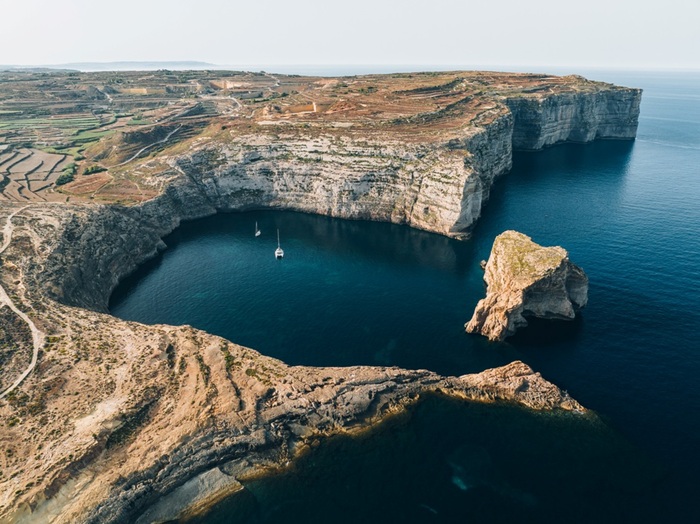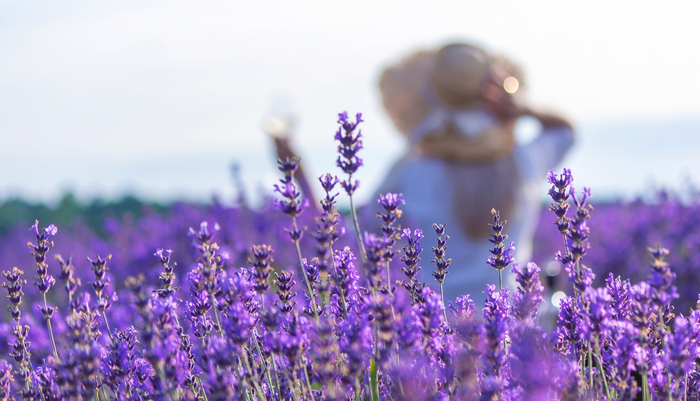VALLETTA - The Maltese archipelago offers walks in spring along paths that smell of flowers, aromatic herbs and Mediterranean scrub.
It is possible to walk in the nature of Malta and Gozo along marked paths and discover unprecedented panoramas and smells.
The journey to discover Maltese perfumes starts from the Argotti Botanic Gardens & Resource center in Floriana, where the national herbarium and a botanical collection of plants typical of the Mediterranean area are kept.
The collection contains shrubs of all sizes, from small wild flowers to large trees.
Moving along the coast to Pembroke, you come across a nature reserve of about 97 hectares: here the Mediterranean thyme predominates, with its unmistakable and enveloping scent, and sea squill, a flower which, although toxic, was used to cure diseases cardiac, renal and respiratory and for its diuretic and expectorant properties.
Walking along the Dingli cliffs, the highest point of the Maltese islands, it is possible to spot shrubs of thyme and sage;
from May the colorful purplish-pink flowers that stretch out towards the sea cover the plants of Cheirolophuscrassifolius, also known by the name of Maltese centaur, elected national flower.
This native shrub grows 20 to 50 centimeters tall and has a sweet, aromatic scent to the touch.
In the municipality of Marsaxlokk, on a peninsula in the south-east of Malta, lies the natural park of Xrobb I-Ghagine which houses a center for sustainable development.
It is one of the few natural places on the mainland where it is easy to see the stratification of the local limestone rock, the Globigerina, otherwise observable only from the sea with a boat ride.
The geological conformation of the area is home to numerous plant species typical of coastal areas with a strong tolerance to salt, such as steppe and garrigue.
A wide variety of plants and herbs can be spotted throughout the reserve, such as large tracts of Arthemis Urvilleana, the Maltese sea chamomile, which fills the air with a sweet, soothing scent.
On the island of Gozo we start from Għarb, a village of medieval origin where there is a small museum dedicated to Francis Xavier Mercieca, farmer and healer.
His knowledge of ancient medicinal plants, and his ability to use them for healing purposes, have made him famous throughout the Mediterranean.
Għarb is located near the natural arch of limestone rock known as Wied il-Mielah where, walking along a path, you will discover wild herbs and plants in a spectacular setting and, with a little luck and attention, the rare Maltese centaur .
Also on the west coast, in Dwejra Bay, is the famous Fungus Rock, also known as Hagret il-General, the general's rock.
It is a 65m high rock completely surrounded by water,
where the commander of a squadron of the Knights of Malta galleys discovered Cynomorium Coccineum, a plant used in folk medicine.
On the northern coast of the island, beyond the bay of Qbajjar, there is a checkerboard of salt pans carved into the rock, where you can admire the traditional collection of natural salt.
By observing carefully, it is possible to glimpse a typical herb which is however considered toxic: it is the Kromb il-Bahar l iswed, a dwarf shrub that grows up to about 100 centimeters in height.
Typical of the Mediterranean, it is a perennial plant that resists extreme climatic conditions, grows in cracks, walls and between rock crevices and is more easily visible in spring and summer, when it flowers.
On the northern coast of the island, beyond the bay of Qbajjar, there is a checkerboard of salt pans carved into the rock, where you can admire the traditional collection of natural salt.
By observing carefully, it is possible to glimpse a typical herb which is however considered toxic: it is the Kromb il-Bahar l iswed, a dwarf shrub that grows up to about 100 centimeters in height.
Typical of the Mediterranean, it is a perennial plant that resists extreme climatic conditions, grows in cracks, walls and between rock crevices and is more easily visible in spring and summer, when it flowers.
On the northern coast of the island, beyond the bay of Qbajjar, there is a checkerboard of salt pans carved into the rock, where you can admire the traditional collection of natural salt.
By observing carefully, it is possible to glimpse a typical herb which is however considered toxic: it is the Kromb il-Bahar l iswed, a dwarf shrub that grows up to about 100 centimeters in height.
Typical of the Mediterranean, it is a perennial plant that resists extreme climatic conditions, grows in cracks, walls and between rock crevices and is more easily visible in spring and summer, when it flowers.
By observing carefully, it is possible to glimpse a typical herb which is however considered toxic: it is the Kromb il-Bahar l iswed, a dwarf shrub that grows up to about 100 centimeters in height.
Typical of the Mediterranean, it is a perennial plant that resists extreme climatic conditions, grows in cracks, walls and between rock crevices and is more easily visible in spring and summer, when it flowers.
By observing carefully, it is possible to glimpse a typical herb which is however considered toxic: it is the Kromb il-Bahar l iswed, a dwarf shrub that grows up to about 100 centimeters in height.
Typical of the Mediterranean, it is a perennial plant that resists extreme climatic conditions, grows in cracks, walls and between rock crevices and is more easily visible in spring and summer, when it flowers.
Finally, southwest of Gozo, there is a route in the small rural area just outside Kercem, about 150 meters above sea level, surrounded by two of Gozo's most important bays: Dwejra to the left and Xlendi to the right.
Since 1981, an annual spring festival, called the Tal-Ghadira Fair, has been held on the first Sunday after Easter, where agricultural products and farm animals are traded.
The whole area boasts a rich diversity of flora - native plants, endemics and even alien or introduced species - and fauna which makes it an ecological location of great importance.
For more information: visitmalta.com (ANSA).







